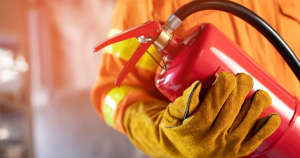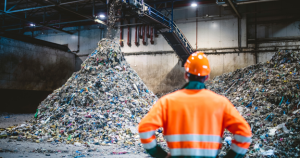Learn when are toeboards required according to OSHA, why they prevent falling-object injuries, and how to stay compliant on platforms, scaffolds, and walkways.
If you’ve ever worked on a platform, scaffold, or any raised surface, you’ve probably seen those small boards at the bottom edge. A lot of workers barely notice them. Some think they’re just “extra wood.”
But those little boards are doing a lot behind the scenes. I’ve seen enough worksites to tell you this: the quickest way to stop a falling wrench, a rolling bolt, or a sliding tool is a toeboard.
And that brings up the big question a lot of people ask: when are toeboards required?
It’s not a guess-as-you-go thing. OSHA has very clear rules about where and when they must be used. Once you understand the “why” behind these rules, they make a lot of sense.
When OSHA Says Toeboards Are Required
Whenever you’re dealing with raised platforms, overhead areas, or places where people walk or work beneath others, OSHA requires toeboards or other protections. The whole point is to stop tools, materials, or debris from falling onto someone below.
According to OSHA’s walking-working surfaces standard, toeboards must be installed anywhere there is a risk of falling objects.
This includes:
- Elevated platforms
- Scaffolds
- Mezzanines
- Raised walkways
- Roof edges when materials are stored near the edge
- Temporary elevated work areas
- Any surface where tools or objects could roll or slide off
People often ask me what counts as the best OSHA-compliant toeboards.
The truth is, OSHA doesn’t force you to use a specific brand or material. The “best” ones are simply the boards that meet OSHA’s minimum requirements:
- At least 3.5 inches high
- Strong enough to stop falling tools
- No more than ¼ inch between the board and the floor
- Securely attached along the entire edge
Wood, steel, plastic; OSHA doesn’t care. What matters is strength, height, and proper installation.
Why Toeboards Matter More Than Most Workers Realize
A lot of workers assume serious injuries only come from falls, heavy machinery, or electrical issues.
But you’d be surprised how many accidents involve something small falling off an elevated surface.
The National Safety Council reports that “struck-by” injuries, including falling tools, are among the most common causes of workplace incidents.
Think about it:
- A bolt dropped from 10 feet can hit someone with enough force to injure them.
- A hammer sliding off a platform becomes a real danger.
Even a metal tape measure can be damaged when dropped from a height.
Toeboards stop these things before they ever get close to the edge. They’re like a simple, reliable safety net for everything sitting at your feet.

Where Toeboards Are Required on the Jobsite
OSHA doesn’t expect toeboards everywhere, only where they protect someone from falling objects. So let’s look at the most common places you need them.
1. Elevated Platforms
If you’re working on a platform and people walk below you, toeboards are required. Doesn’t matter if it’s temporary or permanent.
2. Scaffolds
If anyone could pass underneath the scaffold, workers, inspectors, or even a delivery person, you need toeboards or another form of falling-object protection.
OSHA’s scaffold rules explain this clearly, here.
3. Mezzanines and Raised Walkways
These areas often store tools or materials, which means risk increases. A toeboard protects anyone walking underneath.
4. Roof Edges With Work or Storage
If workers store materials or tools close to the edge, OSHA requires toeboards or equivalent protection.
5. Industrial and Warehouse Racking
Anytime materials are stored overhead and could fall, toeboards or similar barriers are needed.
6. Temporary Work Platforms
Even “quick jobs” count. OSHA doesn’t care if the platform is used for one hour or one week. If it’s elevated and people could be below, you need a toeboard.
Situations Where Toeboards Are Not Required
There are times when you don’t need them. OSHA allows alternatives as long as they protect workers the same way a toeboard would.
This includes:
- Screens
- Mesh
- Nets
- Canopies
- Guardrails with no material stored near the edge
If workers can’t drop anything through or off the platform, OSHA considers you protected.
That said, in most cases, a simple toeboard is the easiest, fastest fix.
The Safety Logic Behind OSHA’s Toeboard Rules
Everything OSHA does connects back to preventing injuries based on real incidents. Toeboards exist because tools fall, even when workers are careful.
Here’s the safety logic:
- People store tools near the edges
- Tools roll, slide, bounce, and get bumped.
- Workers walk under platforms
- One falling object can change a life.
The CDC’s NIOSH division has studied falling-object injuries for years and consistently stresses the importance of barriers such as toeboards.
When you understand how often these accidents happen, the rule stops feeling like “extra work” and starts feeling like common sense.
What Toeboards Should Actually Look Like
Knowing when are toeboards required is only half the battle. The other half is making sure they’re actually installed correctly.
A good toeboard should be:
- Straight and solid: no cracks or soft spots
- Securely attached: screws or bolts that don’t wobble
- High enough: 3.5 inches or more
- Continuous: no random openings along the edge
- Close-fitting: nothing should slide under it
And one more thing: painted or marked toeboards aren’t required, but many companies do it to make inspections easier.
Common Toeboard Mistakes I See on Jobsites
You can tell a lot about a workplace by the way they handle the small things. And toeboards are one of those small things that reveal how seriously a site takes safety.
Here are the top mistakes I see:
1. “Short boards” under 3.5 inches
OSHA doesn’t allow “almost tall enough.”
Short means non-compliant.
2. Gaps big enough for tools to slip under
Small gaps cause big problems.
3. Boards that aren’t fully attached
A wobbly toeboard is worse than no toeboard.
4. Missing toeboards on temporary platforms
Temporary doesn’t mean optional.
5. Relying only on guardrails
Guardrails protect people. Toeboards protect everything else.
6. Using flimsy materials
If it breaks when you kick it lightly, it won’t stop a tool.
These mistakes are simple to fix, but they get ignored because people underestimate how important toeboards really are.

How To Stay OSHA-Compliant Without Overthinking It
When I help workplaces improve their safety setup, I always keep things simple. Here are my go-to steps:
- Inspect platforms weekly
- Replace damaged boards immediately
- Make sure every elevated edge is protected
- Add screens for small or heavy tools.
- Keep surfaces clean; clutter defeats boards
- Review OSHA’s rules once a year
- Train workers to spot weak or missing boards
A lot of workplaces think OSHA compliance is complicated. But when it comes to toeboards, it’s honestly one of the easiest rules to follow.
Final Thoughts
Understanding when are toeboards required helps you stay safe, stay compliant, and protect everyone on the jobsite.
These boards might be small, but they do big work. They’re simple, cheap, and incredibly effective at stopping injuries.
If you’ve got platforms, walkways, or scaffolds, take a walk today and make sure your edges are protected. A few minutes of checking can prevent a serious accident.








